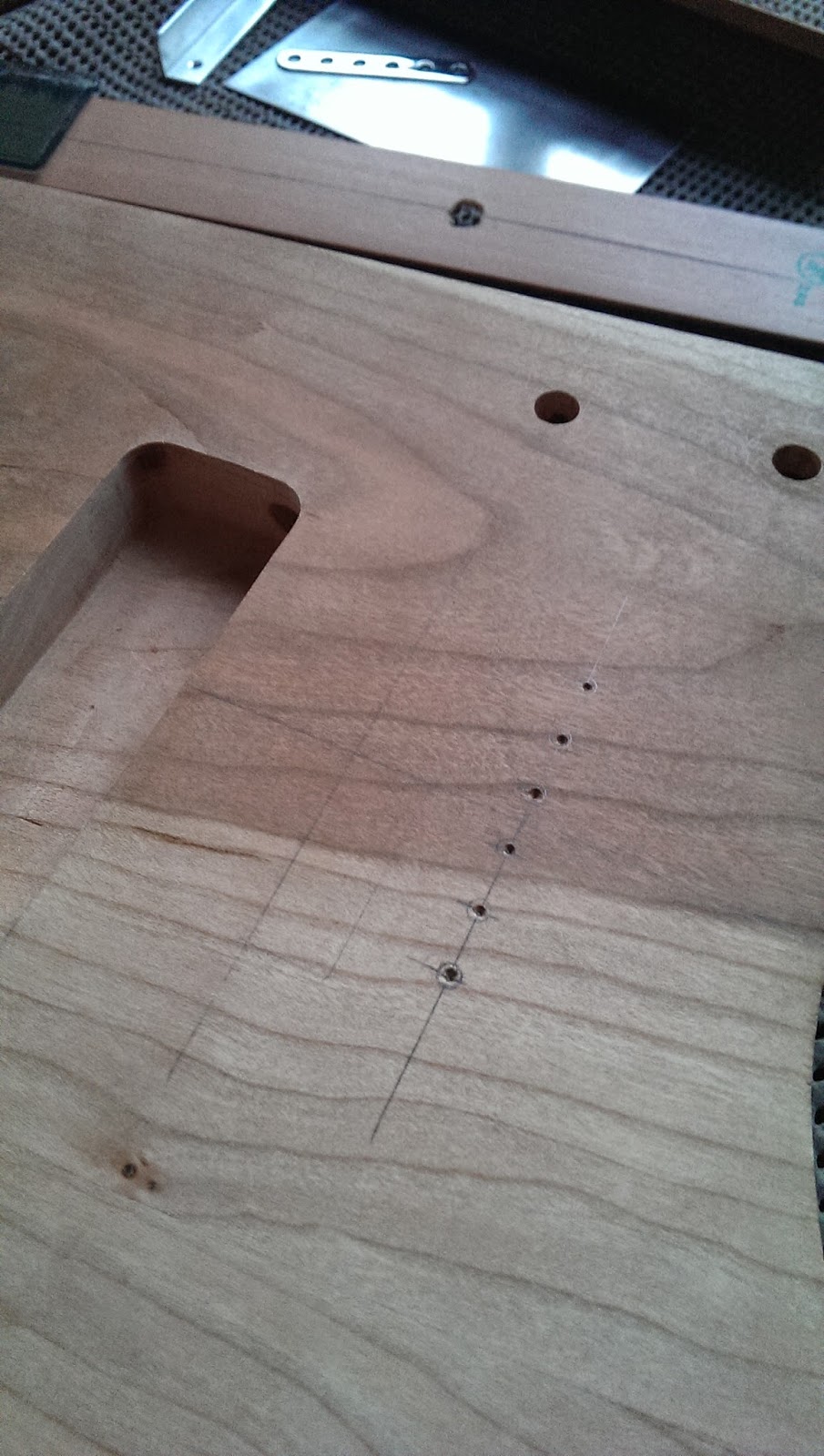During the week I have been working on the fret board for the DLP Lap Steel Guitar. I had decided to use cream binding to mark the positions of the notes but the thickness of the binding meant I would have to slot the board first and then file each groove to the correct width of about 1.5mm.
This turned out to be a rather laborious process to say the least! I uses a fine saw to initially, then a slightly less fine saw and finally 2 different size files to get the slots to the perfect size. I then cut strips of binding slightly oversize and glued them all in position.
With all 24 slots filed to size and the strips glued in place using super glue, I left them to set overnight before trimming them flush.
I'm sure there is an easy way of trimming the fret marker flush but I once again chose the difficult labour intensive route and filed each one close to the fretboard been careful not to damage the fretboard itself.
Once I got close I used a spirit level with sand paper attached to one side with double sided tape to level and then flush the markers. Once again this was a laborious task but I'm starting to see light at the end of the tunnel.
With the top flush I trimmed the side as near to flush as I could and then sanded then edge smooth.
There was a little filling to be done so I melted some spare binding in thinners and pasted into the gaps and then filed everything smooth once it had set. Next I marked out positions of the fret markers.
I'm using green abalone for the first time. I drilled the holes as carefully as possible and used super glue to secure them and then sanded everything flush using progressively finer grades of sand paper.
They came out perfect and wont need any additional filling as the holes I drilled were all perfect! Finally I clamped the fret board to the body and used titebond carpenters glue to secure everything in place.
Next I will round over the back for comfort and more onto installing the electronics so i can test everything before applying a finish... Danish Oil?














































